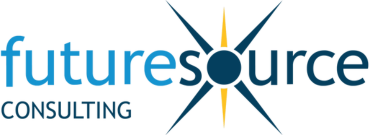Healthcare Opportunities for Wearables
The overall consumer electronics market has trended towards decline in 2020, with COVID-19 applying downward pressure across supply, distribution, retail and demand. However, while some wearable categories such as kids smartwatches have struggled this year, established devices such as smartwatches, sports watches and hearables have continued to enjoy growth, as a result of increasing consumer interest in digital health and fitness devices.
“We’re seeing a renewed interest in sports and health-related activities,” says Stephen Mears, Market Analyst at Futuresource Consulting. “Consumers have been exploring alternatives to the gym, buying home workout equipment, and paying attention to a wide range of digital health products. As a result, wearables have moved further into the spotlight; hearables have started to include activity and health tracking functionality, and wrist-worn wearables continue to integrate better biometric sensors. Moreover, vendors such as Fitbit and Apple are now actively looking to leverage their respective smartwatch platforms to drive subscription content and services, which potentially points to where the category as a whole is heading in the next few years.”
Hearables Lead the Way, Seizing More than Half the Market
This combination of health consciousness and sports resurgence is paving the way for a healthcare-led personal IoT ecosystem. Among the product categories of hearables, wearable smartphones, extended reality head-mounted displays (XR HMD), fitness devices and connected watches, it’s the hearables segment that will take the lion’s share, accounting for more than 55% of global wearables market shipments in 2020.
“For wearables, the road to healthcare is in part being driven by opportunities in hearing correction,” says Mears. “There are more than 400 million people on the planet with hearing loss, and almost half of these are under the age of 50. What’s more, less than 10% own a hearing aid. There’s a great opportunity here for ear-worn wearables. Beyond the ear, however, there remains even more significant medical issues which could be monitored and controlled by wrist-worn wearables, such as high blood pressure, respiratory disease, diabetes, cardiovascular disease, and many others. This presents a lucrative opportunity for vendors, and if appropriately leveraged, could provide peace of mind for consumers.”
“However, given that most consumers are engaging with hearables primarily for the audio enhancement functionality, it remains the case that consumers actively seeking to engage with ‘quantified self’ products will tend towards wrist-worn wearables. While the ear is a better place than the wrist when it comes to tracking health indicators such as heart rate and blood pressure, wrist-worn wearables are actively marketed as fitness and health products. And, of course, the presence of a screen allows consumers to visually engage with their data in real time. Ultimately, industry feedback has emphasised that the mid to long term horizon for wearables involves an integrated ecosystem of wrist and ear worn wearables, with biometric tracking happening in the ear, while activity tracking and data visualisation/processing will happen on the wrist. This ecosystem of products will prove to be more compelling for consumers than either device could on its own.”
Strong Brands, Mighty Market Entrants
The hearables market is currently polarised between dedicated medical product manufacturers and CE vendors and, while CE brands are looking to bridge the gap, the specialist incumbents are confident that their niche markets, serving at the acute end of the various medical issues that wearables are targeting, will remain untouched.
“Specialist hearing aid vendors are actually delighted to see major CE brands highlight the often under-reported problem of hearing loss. It validates the solutions that the specialist vendors are offering and helps to remove the stigma around having an all-day device in the ear. Think of how ubiquitous true wireless headphones have become, even being worn in quiescent mode. Similarly, wrist-worn wearables vendors that target, for example, elderly consumers with dementia who have a tendency to wander, are confident that the entrance of CE vendors will simply highlight the specialist solutions that already exist. CE vendors aren’t necessarily looking to bridge the gap between consumer and medical devices, but rather will see the long-tail of consumers that don’t yet need specialist support as the major opportunity within the healthcare market. Specialist vendors will enjoy a halo effect from this enhanced overall interest in digital health solutions.”
“With growing consumer awareness, ecosystem development and strong CE brands taking to the medical stage, there’s no doubt that the market potential of healthcare is worth a closer look.”

Futuresource Big Tech vs Healthcare Wearables
Stephen Mears, Research Analyst, Futuresource Consulting recently presented on an Institute of Electrical and Electronics Engineers (IEEE) webinar on the topic discussing ‘Big Tech vs. Healthcare wearables: A Goliath and Goliath Story. The data and the presentation are available to view on demand here.
Latest Consumer Electronics Reports
